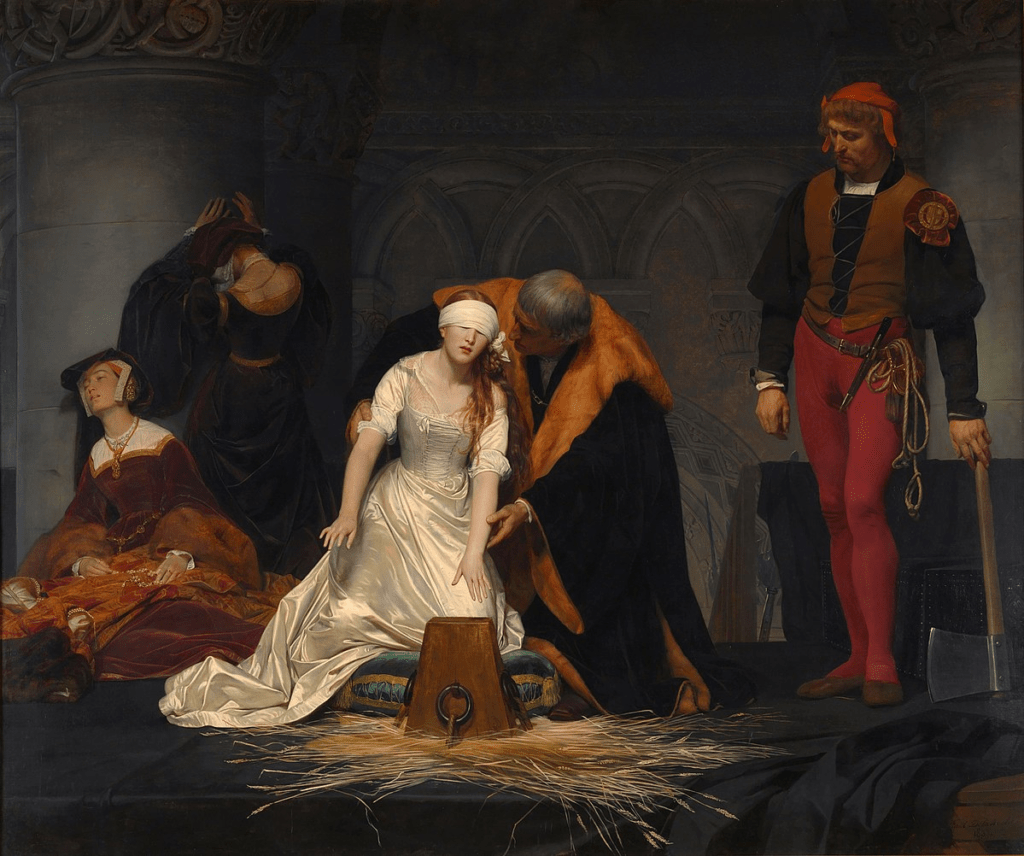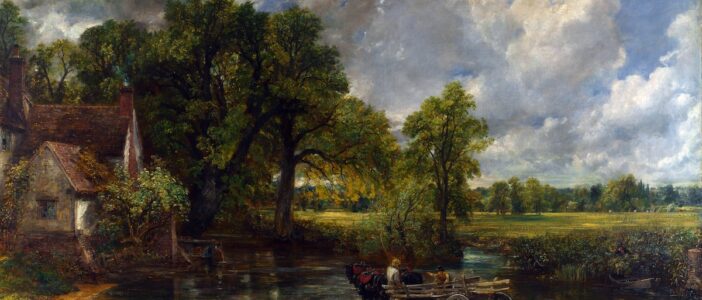As a digital nomad, traveling the world offers a plethora of opportunities to immerse oneself in diverse cultures, history, and art. One such iconic masterpiece awaits exploration at the National Gallery in London: “The Hay Wain” by John Constable. Stepping into the realm of this timeless painting, digital nomads can uncover layers of history, artistic brilliance, and serene beauty. This guide is crafted to illuminate the journey of experiencing “The Hay Wain” and the vibrant city of London, offering insights into its allure, history, and practical tips for an unforgettable visit.
Why it has become so popular
“The Hay Wain” holds an esteemed place in the annals of art history, captivating audiences worldwide for centuries. Its popularity stems from Constable’s masterful depiction of the English countryside, evoking a sense of tranquility and nostalgia. The painting’s timeless appeal lies in its ability to transport viewers to a serene pastoral setting, inviting contemplation and appreciation of nature’s beauty. Furthermore, Constable’s meticulous attention to detail and luminous portrayal of light infuse the artwork with a sense of realism and vitality, garnering admiration from art enthusiasts and scholars alike.
History
Painted between 1821 and 1822, “The Hay Wain” represents a pivotal moment in Constable’s career and the evolution of landscape painting. Exhibited at the Royal Academy in 1821, the painting received mixed reviews initially but gradually gained recognition for its innovative approach to capturing the English countryside. Constable’s dedication to plein air painting, wherein he sketched and painted directly from nature, revolutionized the genre and influenced subsequent generations of artists. Today, “The Hay Wain” stands as a testament to Constable’s enduring legacy and his profound connection to the rural landscapes of England.
What Makes “The Hay Wain” Special
“The Hay Wain” holds a distinct allure that sets it apart as a masterpiece of landscape painting. Here are some key aspects that make it truly special and what to look for when admiring this iconic artwork:
1. Capturing the English Countryside:
John Constable’s deep affection for the English countryside is palpable in every brushstroke of “The Hay Wain.” As you gaze upon the painting, take note of the idyllic rural setting, complete with lush greenery, tranquil waterways, and quaint cottages. Constable’s ability to convey the timeless beauty of the landscape invites viewers to immerse themselves in the serenity of nature.

2. Play of Light and Shadow:
One of Constable’s greatest achievements in “The Hay Wain” is his mastery of light and shadow. Notice how sunlight filters through the trees, casting dappled shadows on the ground and illuminating the scene with a warm, golden glow. The interplay of light and shadow adds depth and dimension to the painting, creating a sense of movement and atmosphere.
3. Attention to Detail:
Constable’s meticulous attention to detail is evident in every aspect of “The Hay Wain,” from the intricate foliage to the carefully rendered architecture. Take a closer look at the subtle nuances of the landscape, such as the reflections in the water, the texture of the trees, and the figures engaged in daily life. Each element is meticulously crafted to evoke a sense of realism and vitality.
4. Emotional Resonance:
Beyond its technical brilliance, “The Hay Wain” exudes a profound emotional resonance that resonates with viewers on a personal level. Whether it’s nostalgia for a bygone era, a longing for simplicity, or an appreciation for the beauty of the natural world, the painting elicits a range of emotions that speak to the human experience. Allow yourself to be transported by the evocative power of Constable’s masterpiece and contemplate its deeper meaning.

What to Look For:
- The Hay Wain: At the center of the painting, observe the eponymous hay wain—a horse-drawn cart used for transporting hay. Notice the attention to detail in the construction of the cart and the figures engaged in loading it.
- The Landscape: Take in the sweeping vistas of the English countryside, characterized by rolling hills, meandering rivers, and lush vegetation. Pay attention to the changing hues of the landscape, from vibrant greens to earthy browns.
- The Sky: Constable’s skillful rendering of the sky adds drama and dynamism to the scene. Look for subtle shifts in cloud formations and atmospheric effects that contribute to the overall mood of the painting.
- The Figures: Notice the figures scattered throughout the composition, engaged in various activities such as fishing, farming, and leisurely strolls. Consider the role of human presence in relation to the natural environment and the narrative unfolding within the scene.
Best Time to Visit
To fully appreciate the splendor of “The Hay Wain” and the vibrant city of London, digital nomads are advised to plan their visit during the spring or autumn months. During these seasons, London experiences mild weather, making it ideal for exploring outdoor attractions such as the National Gallery and nearby parks. Additionally, visiting during weekdays and off-peak hours can help avoid crowds, allowing for a more intimate and immersive experience with the artwork.
A Detailed Itinerary for Spending 3 Days in the Locality
Day 1: Exploring the National Gallery and Trafalgar Square
- Morning: Begin your day with a visit to the National Gallery, where “The Hay Wain” awaits. Take your time to admire Constable’s masterpiece and explore other renowned works of art housed within the gallery.
- Afternoon: After a leisurely lunch, venture into Trafalgar Square, a bustling hub of cultural and social activity. Marvel at Nelson’s Column, visit the iconic lion statues, and soak in the lively atmosphere.
- Evening: Conclude your day with a stroll along the nearby Embankment, enjoying panoramic views of the River Thames and iconic landmarks such as the London Eye and Big Ben.
Day 2: Discovering Greenwich and the Thames
- Morning: Take a scenic boat ride along the River Thames to Greenwich, a UNESCO World Heritage Site renowned for its maritime history and royal heritage. Visit the historic Cutty Sark and explore the Greenwich Market.
- Afternoon: Enjoy a picnic in Greenwich Park, offering sweeping views of the London skyline and the opportunity to unwind amidst lush greenery.
- Evening: Return to central London and dine at one of the city’s eclectic restaurants, savoring a diverse range of culinary delights from around the world.

Day 3: Cultural Immersion in South Kensington
- Morning: Head to South Kensington and delve into the cultural treasures of the area, including the Victoria and Albert Museum, Natural History Museum, and Science Museum.
- Afternoon: Wander through Hyde Park, one of London’s largest and most picturesque parks, and revel in its tranquil ambiance.
- Evening: Explore the vibrant nightlife of South Kensington, with its array of trendy bars, cafes, and live music venues.
Places to Stay for Hipsters and Digital Nomads
For hipster-friendly accommodations in London, consider booking a stay at the following establishments:
- Ace Hotel London Shoreditch: Nestled in the heart of East London’s vibrant Shoreditch district, this boutique hotel boasts stylish rooms, a buzzing lobby bar, and a diverse range of cultural events.
- The Hoxton, Holborn: With its chic design aesthetic and lively atmosphere, The Hoxton offers a haven for digital nomads seeking inspiration and connectivity in central London.
- Qbic Hotel London City: Embrace sustainability and creativity at Qbic Hotel, where eco-friendly design meets affordability. Located in the trendy neighborhood of Whitechapel, this hotel provides a comfortable base for exploring the city.
Other Highlights of the National Gallery, London
In addition to “The Hay Wain” by John Constable, the National Gallery in London boasts an impressive collection of masterpieces spanning centuries of artistic innovation and expression. Here are some other highlights not to be missed during your visit:
1. “The Arnolfini Portrait” by Jan van Eyck:
This iconic 15th-century masterpiece is celebrated for its intricate detail and symbolism. Pay close attention to the reflection in the convex mirror, which offers a fascinating glimpse into the artist’s studio and the enigmatic figures depicted within.
2. “Sunflowers” by Vincent van Gogh:
Van Gogh’s vibrant still-life paintings of sunflowers are renowned for their bold colors and expressive brushwork. Marvel at the intensity of hues and the dynamic interplay of light and shadow in this iconic series of works.
3. “The Ambassadors” by Hans Holbein the Younger:
Holbein’s double portrait of two Renaissance diplomats is a testament to his mastery of portraiture and attention to detail. Look closely at the intricate symbolism embedded within the painting, including the distorted image of a skull—a memento mori reminding viewers of the transience of life.
4. “The Fighting Temeraire” by J.M.W. Turner:
Turner’s evocative depiction of a steamship towing a retired warship captures the spirit of the Industrial Revolution and the decline of traditional maritime industries. Observe the luminous colors and dynamic composition that convey a sense of nostalgia and awe-inspiring beauty.

5. “Venus and Mars” by Sandro Botticelli:
Botticelli’s mythological painting depicts the Roman gods Venus and Mars reclining in a landscape filled with symbolic imagery. Delve into the rich allegorical layers of the composition, from the juxtaposition of love and war to the intricate details of flora and fauna.
6. “The Rokeby Venus” by Diego Velázquez:
Velázquez’s sensual portrayal of the goddess Venus captivates viewers with its soft lighting and exquisite rendering of the female form. Reflect on the artist’s innovative use of perspective and his exploration of beauty, desire, and mythology.
7. “The Entombment” by Michelangelo Merisi da Caravaggio:
Caravaggio’s dramatic depiction of the entombment of Christ exudes raw emotion and intensity. Study the artist’s mastery of chiaroscuro—the use of light and shadow—to create a sense of drama and immediacy that draws viewers into the scene.
8. “Bacchus and Ariadne” by Titian:
Titian’s mythological painting depicts the union of Bacchus, the god of wine, and Ariadne, the mortal princess. Admire the richness of color and the dynamic composition that captures the joyous celebration of love and revelry.
9. “The Execution of Lady Jane Grey” by Paul Delaroche:
Delaroche’s poignant historical painting depicts the tragic fate of Lady Jane Grey, the “Nine Days’ Queen” of England. Explore the artist’s meticulous attention to detail and his ability to convey the human drama and pathos of this historical event.

10. “Madonna of the Pinks” by Raphael:
Raphael’s exquisite Madonna and Child painting radiates maternal tenderness and grace. Notice the delicate rendering of the figures and the intricate details of the floral garland, symbolizing purity and devotion.
As you journey through the galleries of the National Gallery, London, each masterpiece offers a window into the rich tapestry of human creativity and the enduring power of art to inspire, provoke, and enlighten. Take your time to savor each moment and allow yourself to be transported by the beauty and wonder that abound within these hallowed halls.
Places to Eat
Indulge your taste buds at these hip eateries in London:
- Dishoom: Experience the flavors of Bombay at Dishoom, a popular restaurant serving delicious Indian cuisine in a retro-chic setting.
- Sketch: Immerse yourself in art and gastronomy at Sketch, a whimsical dining destination known for its Instagram-worthy interiors and innovative menu.
- Flat Iron: Savor mouthwatering steak at Flat Iron, a no-frills restaurant offering high-quality cuts at affordable prices.
Co-working Opportunities Nearby
Stay productive while exploring London with these co-working spaces:
- WeWork Spitalfields: Located in the heart of East London’s creative hub, WeWork Spitalfields provides a dynamic work environment with state-of-the-art amenities and networking opportunities.
- Second Home Holland Park: Escape the hustle and bustle of central London at Second Home Holland Park, a serene co-working space nestled within a lush garden setting.
- Huckletree Shoreditch: Join a community of innovators and entrepreneurs at Huckletree Shoreditch, a vibrant co-working space offering flexible memberships and curated events.
Embark on a journey of discovery and inspiration in the vibrant metropolis of London, where the timeless beauty of “The Hay Wain” awaits alongside a wealth of cultural riches and modern amenities. Whether you’re seeking artistic enlightenment, culinary delights, or entrepreneurial opportunities, London promises an unforgettable experience for digital nomads seeking to explore, create, and connect.
Useful Links:

